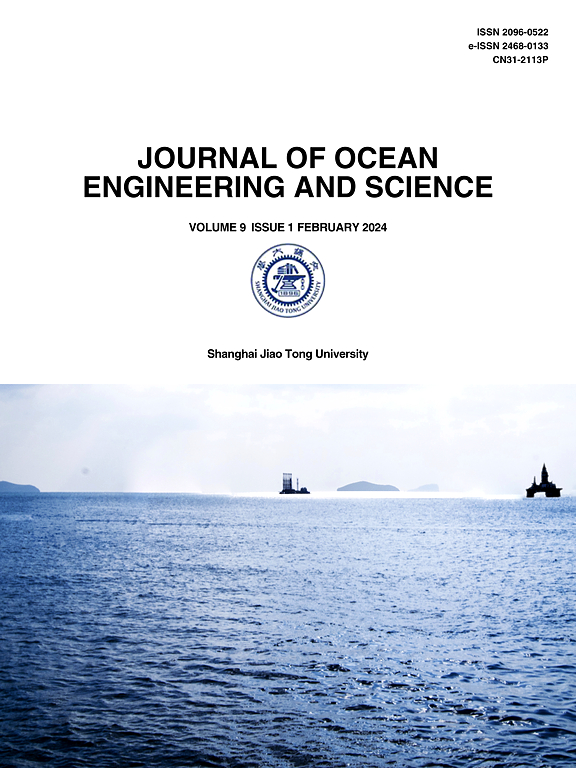Comparative study of two cost assessment approaches to models for offshore oil and gas platform decommissioning
IF 11.8
1区 工程技术
Q1 ENGINEERING, MARINE
引用次数: 0
Abstract
Offshore oil and gas facilities have been developed for over a century. The current exploration, development, and mining technologies are already perfect. However, the offshore oil and gas facilities in the world's major offshore oil-producing countries face serious aging challenges and many are overdue for service. Moreover, many oil and gas platforms are in urgent need of decommissioning. The cost of decommissioning is one of the most concerning issues for energy companies and governments. This study compared two different approaches to cost assessment models built by using United Kingdom Continental Shelf (UKCS) decommissioned platforms: a model constructed using a popular top-down approach, and one created by a novel bottom-up approach. Both models use the completed decommissioning projects in the UKCS area as research and verification resources. According to the results, although the cost assessment model constructed using the bottom-up method is challenging, it has higher accuracy and more robust versatility. The top-down approach model is more suitable for governments and energy companies to make rough assessments of the market and projects. The bottom-up approach model is more suitable for a more detailed cost assessment of the decommissioning of individual facilities and can be integrated with results from other assessment models (such as risk and impact assessment models) to obtain more accurate cost assessment results. Both approaches have great room for improvement at present, and further integration of disciplines may be the key to breakthroughs in this field.
海洋油气平台退役模型两种成本评估方法的比较研究
海上石油和天然气设施已经开发了一个多世纪。目前的勘探、开发和开采技术已经非常完善。然而,世界主要海上石油生产国的海上油气设施面临着严重的老化挑战,许多设施已经过期。此外,许多石油和天然气平台迫切需要退役。退役成本是能源公司和政府最关心的问题之一。本研究比较了使用英国大陆架(UKCS)退役平台建立的两种不同的成本评估模型:一种是采用流行的自上而下方法构建的模型,另一种是采用新颖的自下而上方法创建的模型。这两种模型都使用英国大陆架地区已完成的退役项目作为研究和验证资源。结果表明,采用自底向上方法构建的成本评估模型虽然具有一定的挑战性,但具有更高的准确性和更强的通用性。自上而下的方法模型更适合政府和能源企业对市场和项目进行粗略评估。自下而上的方法模型更适合对单个设施的退役进行更详细的成本评估,并可与其他评估模型(如风险和影响评估模型)的结果相结合,以获得更准确的成本评估结果。目前这两种方法都有很大的改进空间,进一步的学科整合可能是该领域取得突破的关键。
本文章由计算机程序翻译,如有差异,请以英文原文为准。
求助全文
约1分钟内获得全文
求助全文
来源期刊

Journal of Ocean Engineering and Science
Multiple-
CiteScore
11.50
自引率
19.70%
发文量
224
审稿时长
29 days
期刊介绍:
The Journal of Ocean Engineering and Science (JOES) serves as a platform for disseminating original research and advancements in the realm of ocean engineering and science.
JOES encourages the submission of papers covering various aspects of ocean engineering and science.
 求助内容:
求助内容: 应助结果提醒方式:
应助结果提醒方式:


